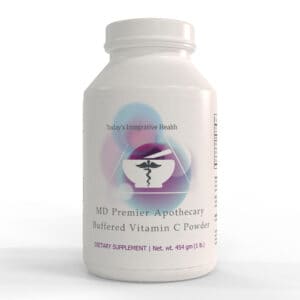Aging adults have many ailments of which to be aware. Investigating a common disease, such as osteoporosis, is a good place to start if you are concerned about your bone health. Men and women over the age of thirty can begin to experience symptoms of bone loss due to some unchangeable factors.
Things such as gender, age, race, family history, hormones, diet, and body frame size contribute to the likelihood of developing this disease.
What Is Osteoporosis?
The word itself means porous bone. Bone is a living tissue that is constantly regenerating. As you age, some of the cells that die are not regenerated, which causes weakened bones and lower bone mass.
Up to age 30, most people build more bone mass than what is lost. When a person has osteoporosis and is past 35 years of age, bones become brittle and are more prone to break.
The areas affected usually include the hip, wrist, and spine. If left untreated, one may develop compression fractures which happen slowly over time. Bending over, hitting a speed bump, or twisting the wrong way may cause pain.
The bones continue to break down, and without intervention, a person’s risk of death after a fall increases substantially.
Risk Factors
- Gender: Both men and women are at risk for osteoporosis. Post-menopausal women have a higher risk of developing this because the rate of bone breakdown increases faster than it can be replaced due to slowed estrogen production.
- Age: Young people have a lower risk of developing this disease, while aging adults are more likely to have it as the bone tissue breaks down.
- Race: Asian and Caucasian women are more likely to have osteoporosis. But African-American and Hispanic women are also at a higher risk.
- Family History: People can inherit the predisposition for weak bones, especially if there is a past indication of fractures happening in the family. Those who break bones easily are also at a higher risk of getting this disease.
- Hormones: Women with abnormal menstrual cycles or low levels of estrogen may have weaker bones. Men who have low testosterone can also struggle with bone density and strength.
- Body Frame Size: Small body frames have a higher risk because there is less bone mass overall.
- Lifestyle: A sedentary lifestyle can affect many parts of the body, but the bones especially. A body in motion stays in motion. A body at rest stays at rest. It is important to live an active lifestyle once you have been diagnosed with osteoporosis.
- Diet: A prolonged diet that is low in calcium will reduce the stores in the body that are needed to produce healthy bones. People with eating disorders are also at high risk.
Preventative Care
Calcium
Calcium intake is extremely important for children who are growing. They need a lot, and it usually is absorbed well. Older people do not absorb it as well, and the dosage should be increased to at least 1,000 mg per day after age 51.
Items like broccoli, tofu, oranges, nuts, and fish are good sources of calcium. To increase the rate of absorption, your body also needs Vitamin D. You can get what you need by being in the sunshine for 15 minutes a day, as well as through Vitamin D supplements of 800 IU dose per day.
Body Weight
It is also imperative to maintain healthy body weight. Those with a body mass index, or BMI, of 19 or less should do what they can to gain weight. Those with a BMI of 25 or over should consider making some diet and lifestyle changes to limit their symptoms.
Participating in exercises that promote balance, hand-eye coordination, and muscle strength will be helpful to anyone who is losing bone mass.
Safe Environment
Designing a living environment that is clutter free, spacious, and safe may help reduce fall risks. Having non-slip rugs and slippers can help one move freely without fear of slipping on the floor. Reducing trip hazards such as cords, wires, or boxes is also helpful.
Seek Guidance
Talk with your doctor to see if you are at risk for osteoporosis and what you can do to prevent the progression of the disease. You can also ask for a bone density assessment to determine the strength of your bones.
Call Our Office for a Consultation
Dr. Leo at Today’s Integrative Health uses functional medicine to find the root of your ailment and truly strives to heal you. He will customize care to suit your needs and is highly trained to treat and control your osteoporosis. Call the office at (301) 770-6650 today to schedule a consultation. We are located at 6321 Executive Blvd, Rockville, MD 20852, in the Executive office park. Don’t let your bones slow you down; slow down the aging of your bones!
Related Products
-
 MDPA Bone Guardian (240 Capsules)$45.00 — available on subscription
MDPA Bone Guardian (240 Capsules)$45.00 — available on subscription -
 MDPA Buffered C Powder (1 lb.)$50.00 — available on subscription
MDPA Buffered C Powder (1 lb.)$50.00 — available on subscription -
 MDPA Vitamin D3+ 125 mcg (150 Capsules)$33.00 — available on subscription
MDPA Vitamin D3+ 125 mcg (150 Capsules)$33.00 — available on subscription













